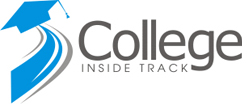The big problem facing Twin Cities’ small colleges
CIT’s Jay Benanav was recently interviewed in the Minneapolis/St. Paul Business Journal.
Several small Twin Cities private colleges use adjectives such as “innovation,” “creativity” and “high impact” to promote their institutions. However, higher education experts are using phrases like “struggling,” “between a rock and a hard place” and “potential mergers” to describe some of them.
From 2011 through 2015, Augsburg College, Bethel University, St. Catherine University and Hamline University all faltered financially. Revenue and net cash flow from operations dropped at all but Bethel. Trends that are pinching private-college finances nationally — such as the building of expensive facilities to attract students — are playing out locally. Hamline University, for instance, took out more debt than it anticipated to build a $36 million student center in 2012, contributing to a December bond downgrade from Moody’s.
Meanwhile, the University of St. Thomas has managed to stay relatively healthy financially. That’s partly due to its ability to churn out high-earning students.
Schools that are struggling are aware of the issues and are trying to right the ship, but some observers are starting to wonder if it’s possible for the institutions to continue to function as they are.
“At some point, they’re going to look at their [finances] and say, ‘We can’t do it.’ ” said Jay Benanav, founder of College Inside Track, a consultant group that helps students select and apply to colleges. “I believe … at some point, some of these schools are going to have to figure how to survive. I see some kind of a full merger or a relationship with one of the other [local colleges.] … They’re between a rock and a hard place.”
(Note: The Business Journal chose these schools because they are roughly the same size, in the same geographic location and financial data was available for them. We excluded Macalester College, which has a national reputation and draws students from across the country. Data for Concordia University in St. Paul was not available.)
The path forward schools are taking
Hamline in St. Paul, which has already spun off its law school in a merger, experienced the largest drop in net cash flow, which is the money generated by the school’s core business minus expenses — essentially its profit margin. From 2011 to 2015, Hamline’s net cash flow declined 77 percent, according to financial disclosures from bond documents. In December, credit-rating service Moody’s downgraded Hamline’s bond rating from Baa2 to Baa3, the lowest while still considered investment grade. Moody’s cited a “substantial decline” in liquidity, moderate cash flow and a “highly competitive environment,” coupled with a drop in graduate-level enrollment.
At the end of 2015, Hamline merged its law school with William Mitchell College of Law in St. Paul because it was projected to lose money, if it wasn’t already, based on financial trends, said John Matachek, the interim provost for the school. The merger also created a new entity now separate from Hamline.
Matachek didn’t deny there have been financial issues. He noted the school didn’t raise enough money for its new student center, so it had to bond more money than planned.
Bond payments for the building, called Anderson Center, started in 2013 — at the same time the law school was struggling, he said. The school is now in a better position to manage its finances.
“We’re reassessing our infrastructure and really matching our expenses to our revenue. We’re actually pretty confident that we know what our revenues are going to look like.”
The school also stopped providing its J-term for free. Students are welcome to take courses offered while school is usually out, such as over winter break, but now they must pay for it. Many other schools began charging for that years ago.
“We were sort of late to making that move,” Matachek said.
Hamline also has been increasing the number of students it admits, but the percentage of those who actually enroll is declining. In the school year that started in 2010, Hamline admitted 1,662 individuals and 26 percent of them enrolled. At the started of the 2015-2016 school year, 2,892 individuals were admitted but only 18 percent enrolled.
Not coincidentally, the school just matriculated its largest freshman class in its history. Some of that increase was to help with revenue while also trying to combat the general decline in enrollment many small colleges are experiencing. Matachek thinks finances will improve by next fall as the university continues to tackle these issues head on.
“We’re confident we can manage our programs, manage our finances.”
Augsburg said interest in the school is increasing and St. Catherine stated it’s evaulating its offerings. Bethel confirmed figures but didn’t respond to an interview request.
College officials and industry experts attribute the decline in financial health of some Twin Cities’ small private colleges to the following:
- The cost to attend the institutions is around $40,000 a year — and they have to offer big tuition discounts to remain competitive. Even after those discounts, it’s still often cheaper to go to a local public university.
- The schools are waging a so-called “arms race.” Prospective students want shiny new dorms, more amenities and new student centers. Those cost millions of dollars and the costs are sometimes either passed on to students or bonded out.
- These schools have good academic reputations and launch students into careers the world needs, but often times in industries that don’t pay a lot. If the graduates don’t make big money, that hampers their ability to donate back to their schools.
- Higher education as an industry is slow to adapt to meet financial challenges.
“Institutions have been reluctant to reset their offerings,” said Rick Staisloff, founder and principal at Annapolis, Md.-based at Rpk Group, which consults with colleges and universities on business strategy. “They end up trying to maintain an existing programmatic infrastructure across fewer and fewer students.”
One reason St. Thomas performs well is it understands how the programs it offers impact its business model, Staisloff said. “Most institutions don’t know how much revenue you get from a history major versus a biology major. If you don’t know that, it gets difficult to understand where I might invest to drive more growth.”
Class dismissed?
In the end, the cost to attend private colleges in the metro has risen faster than most household incomes. The choice students face is usually to attend one of the private schools and take on a load of debt or go somewhere cheaper. The arms race among colleges to build new facilities keeps the costs climbing, creating a cycle with no end in sight.
“I do wonder, what if they don’t build [new facilities] and tuition is half [of what it is now, would that help]?” said Benanav of College Inside Track.
St. Thomas recently announced plans to add more student housing with high-end finishes.
The college wants to get more of its undergraduates in campus housing, in part for more revenue. The university acknowledges it’s adding new facilities to stay ahead or keep pace with other schools.
“You market to that 18-year-old and in many cases those are the things that are very attractive,” said Mark Vangsgard, chief financial officer for St. Thomas. “The No. 1 major of any incoming freshman is undecided. They have no idea. So they default [to attractive facilities]. What they eat and where they socialize [plays a huge role].”
Benanav thinks there will eventually be mergers between area schools, though that prediction isn’t shared by Vangsgard,
“These are institutions that have been around a century or more and have reinvented themselves countless times,” Vangsgard said. “While the finances paint a bleak picture, some can’t bet against them yet. There’s a resiliency factor that is unexplainable that lies outside the financial equation. Higher education has been adaptable.”
Senior Reporter Katharine Grayson contributed to this report.


